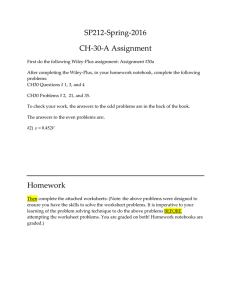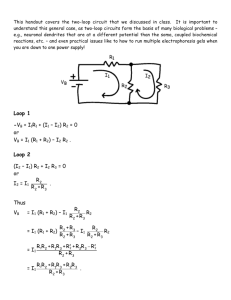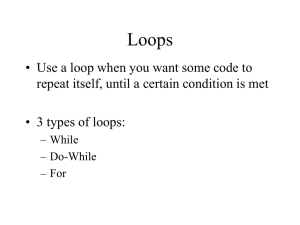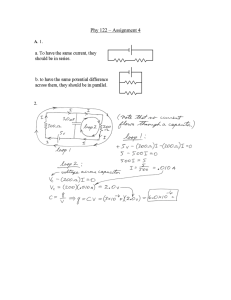Phy 132 - Assignment 10
advertisement
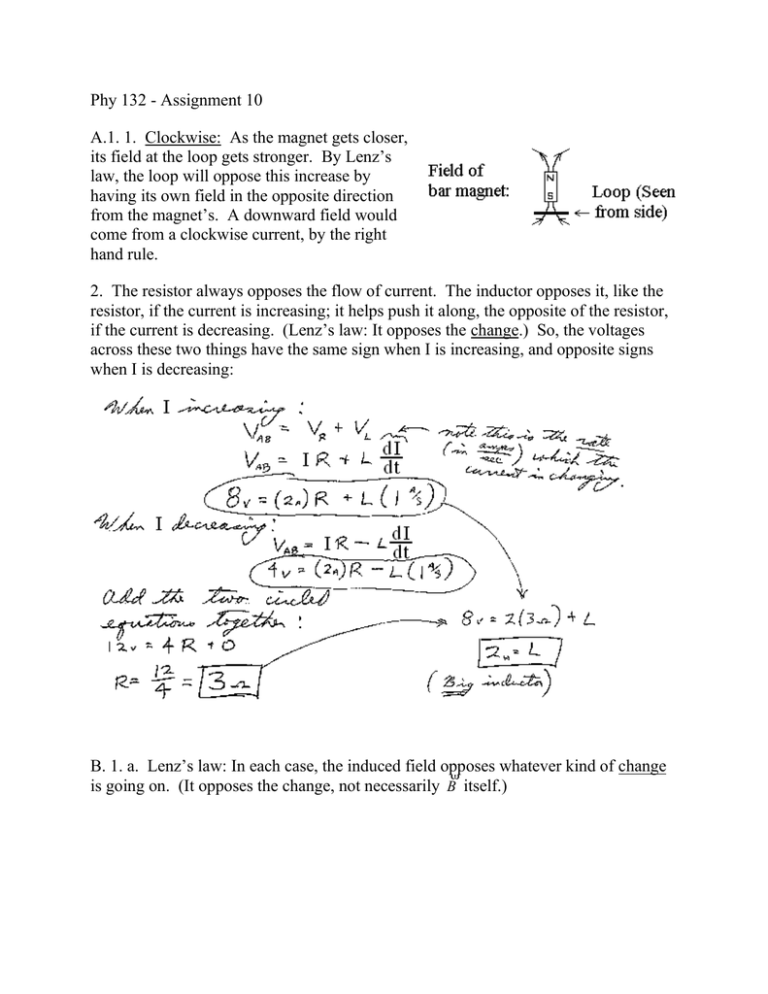
Phy 132 - Assignment 10 A.1. 1. Clockwise: As the magnet gets closer, its field at the loop gets stronger. By Lenz’s law, the loop will oppose this increase by having its own field in the opposite direction from the magnet’s. A downward field would come from a clockwise current, by the right hand rule. 2. The resistor always opposes the flow of current. The inductor opposes it, like the resistor, if the current is increasing; it helps push it along, the opposite of the resistor, if the current is decreasing. (Lenz’s law: It opposes the change.) So, the voltages across these two things have the same sign when I is increasing, and opposite signs when I is decreasing: B. 1. a. Lenz’s law: In each case, the induced field opposes whatever kind of change is going on. (It opposes the change, not necessarily B itself.) 2. dI/dt = 2t – 6 E = -L (dI/dt) = - (.090 H)(2t – 6) a. E = -(.09)[2(4s) – 6] = - .180 V (The answer is just .180 V because it asks for magnitude.) b. 0 = - (.090 H)(2t – 6) 0 = 2t – 6 t = 3.00 s C.1. . E 1 = -M (dI2/dt) (-.096 V) = -M (1.20 A/s) (Inductance, M or L, is always positive. So, when the question said 96.0 mV, it must have been just the size of the voltage without considering its polarity. I stuck a minus on to make M come out positive. If you get this quiz, don’t give a negative answer.) M = .096/1.2 = .080 H, or 80 mH 2. From E = -L (dI/dt), E = -L (I/t) if the rate of change is constant or you want the average. L (I/t) = (.003 H)[(1.5 - .2)/(.2 s)] = .0195 V (Left out the minus because it asks for the magnitude.) 3. D. 1. Maximum: When the loops are parallel. Minimum: When the loops are perpendicular. Reason: If the loops are perpendicular, then none of the lines of flux coming out of one loop pass through the other: That means that no matter how fast the field is changing, no voltage will be induced in loop 1. Put that into E 1 = -M (dI2/dt), and it follows that M=0. If the loops are parallel, then loop 1 will catch a maximum amount of flux, inducing a maximum voltage, making M as big as it can be. 2. E. 1. The blow can knock some of the little atomic magnets loose from the organized pattern which makes them add up to a net field for the whole object 2. For a path, go along the 8 cm radius circle shown in the question. F. 1. When placed in an external magnetic field, A diamagnetic substance becomes weakly magnetized opposite to the external field. (Due to the field's effect on the motion of electrons in atoms which are ordinarily nonmagnetic) A paramagnetic substance becomes weakly magnetized parallel to the external field. (Its atoms do have permanent magnetic moments which try to align with it.) A Ferromagnetic substance becomes strongly magnetized parallel to the external field. (Its domains of atoms try to align with it. Atomic magnetic moments in a domain are parallel, held by an effect that overcomes the thermal agitation which keeps paramagnetism weak.) 2.
